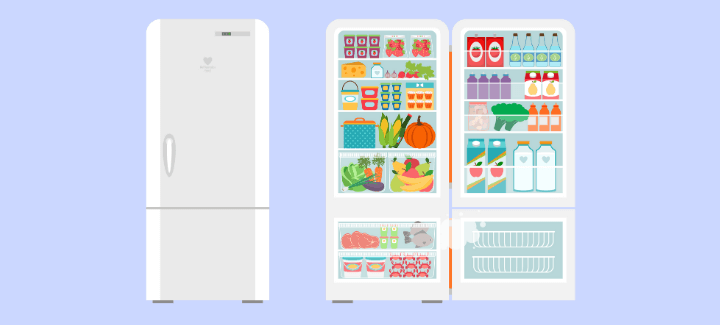
In the restaurant as well as the hospitality industry, food handling is a crucial aspect. This is not restricted to food preparation but also how the ingredients were procured and how the food is handled before reaching the customers’ table. It is very important to keep the food out of the temperature danger zone i.e., the range between 41˚F and 135˚F where any microbes in the food can multiply faster.
This is not an issue when you are preparing food fresh and it is being served to the customer immediately while the internal temperature is >165oF. When the prepared food is not served in a short while after taking it off the stove, you need to properly cool it to pass through the danger zone rapidly. You may consider putting it in the refrigerator soon as the food is prepared but this is hazardous in two ways:
So, you need to take additional steps to cool the prepared food properly and avoid any microbe multiplication.
Depending on multiple factors, you may have difficulty in cooling the prepared food quickly enough to avoid the food remaining in the danger zone for too long. Let’s see the common reasons:
When you place a large container in the refrigerator, owing to the high volume of food stored inside, the food doesn’t cool evenly. The cooling happens radially with the outer surface getting cooler while the core still remains hot. So, you also run the risk of overcooking the food at the core while waiting for the food to cool down.
When storing specialized food such as different cuts of meat or deep pan dishes such as lasagna, shepherd’s pie, etc. the dense portions make it difficult for them to be cooled evenly.
Deep and narrow containers are great for preparing food items such as soup, broth, or stews but not ideal for storing them in the refrigerator. When the food is placed in deep bottom pans instead of shallow containers, the food inside takes more time to cool.
Recommended: Food Handlers Permit: How to get a fresh one, renew it, or claim a lost one
Derived from the reasons mentioned above, to cool food quickly, you can use any of the following methods:
Dividing the food into smaller containers, you reduce the volume while increasing the surface volume. Smaller batches mean the comprehensive time taken for cooling would be significantly less compared to cooling it in a single container.
This might sound like a piece of advice that need not be mentioned, many restaurant workers tend to overlook such a small mistake. Stainless steel or cast iron utensils are thermally conductive and hence can transfer heat quicker than insulative materials such as plastic, glass, or silicon.
The sudden drop in temperature can cause microbes to become active and multiply faster. Placing the prepared food in a container that is immersed in water or an ice bath, you can gradually lower the temperature but this would be quicker than air cooling. It helps a lot if you keep stirring the food while in a bath as it allows the air to circulate through the food while being cooled by the bath. When cooling down liquids such as soups or broth you can drop in ice cubes or frozen vegetables to help with reducing the temperature.
While placing the food in a refrigerator, loosely wrapping it allows cold air to enter and bring the temperature to 41oF. Once cooled, you can close the container with an airtight lid to prevent any further contamination.
While thawing out or reheating the earlier cooled food, never thaw at normal room temperature. Use any of the following methods to do so:
Food handling is difficult but with time and practice, it will become easier. All you need to remember is how to cool prepared food and reheat later. It would be suggested to label the food containers with important information such as time and date of preparation. This and much other vital information regarding food handling is available in the food handlers certificate that acknowledges your in-depth information about handling food professionally.